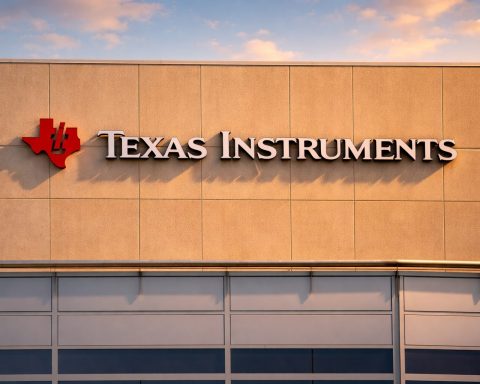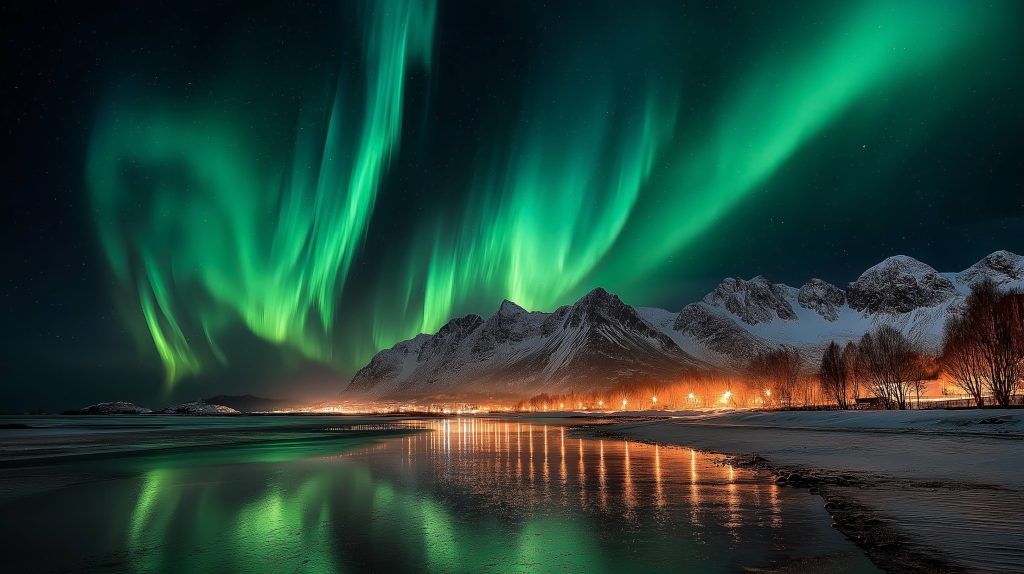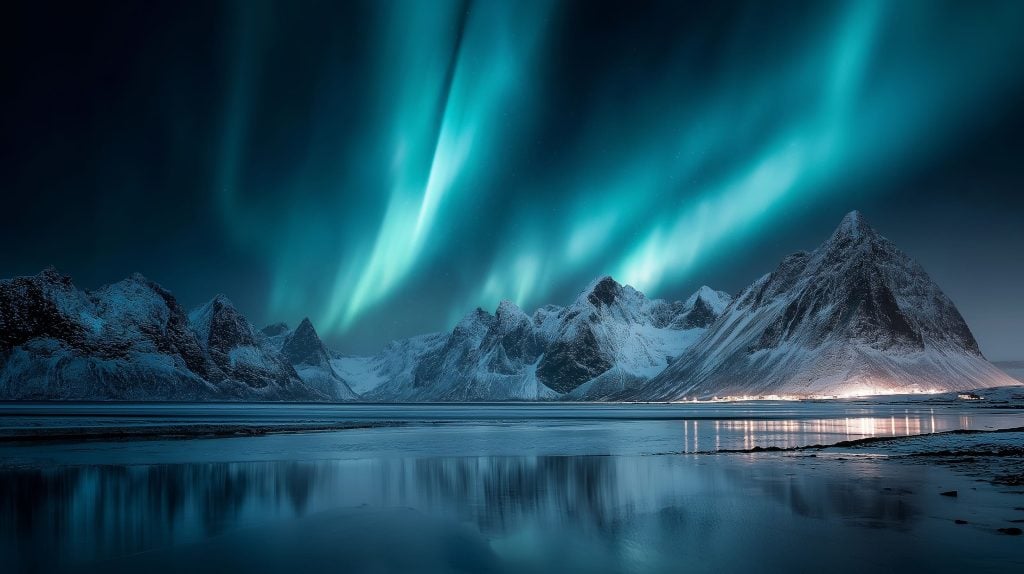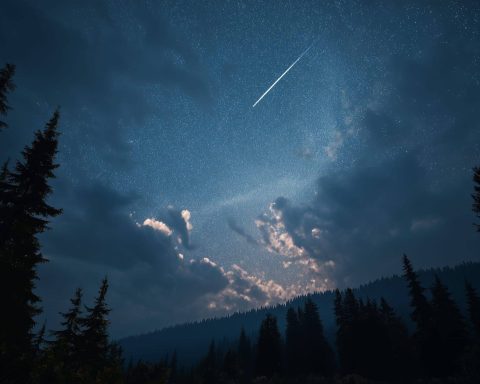A fresh surge of solar energy is primed to extend the Northern Lights show across parts of the United States tonight, Wednesday, November 12, 2025. NOAA’s Space Weather Prediction Center (SWPC) has a G4 (Severe) geomagnetic storm watch in effect for today, following multiple coronal mass ejections (CMEs) from the Sun. G4 conditions were already reached overnight and forecasters say additional impacts are likely into tonight as another fast CME sweeps past Earth. [1]
What’s new today (Nov. 12)
- G4 (Severe) watch remains in effect. SWPC upgraded guidance notes severe storming potential today due to a series of CMEs, including one linked to an X5.1-class solar flare on Tuesday morning. [2]
- G4 levels were observed at 01:20 UTC (8:20 p.m. EST Tue). Storming has oscillated between strong and severe since, with more activity expected tonight as CME passage continues. [3]
- Peak aurora chances tonight: NOAA’s 3‑day geomagnetic forecast projects Kp 7–8 earlier in the UTC day and a renewed Kp 7 window late evening into the overnight for North America (see local times below). [4]
- International perspective: The U.K. Met Office currently lists G4 and even G5 (Extreme) watches spanning today into Thursday in UTC time, underscoring how energetic this event may be. (They use the same G-scale as NOAA.) [5]
- Widespread U.S. sightings last night: Auroras were photographed from coast to coast—including unusually far south—after the initial CME impacts, and forecasters said the show could continue tonight. [6]
Where the Northern Lights are most likely in the U.S. tonight
Based on today’s forecast maps and model “viewline” guidance, the best odds run across the northern tier—Alaska and the northern Plains/Upper Midwest into the Great Lakes and far Northeast. A current roundup highlights 17 states that are at least partially north of the viewline tonight: Alaska, Washington, Oregon, Idaho, Montana, Wyoming, North Dakota, South Dakota, Minnesota, Wisconsin, Michigan, Nebraska, Iowa, Illinois, New York, Vermont, and New Hampshire. If the incoming CME couples strongly with Earth’s magnetic field, auroras could push farther south than this list. [7]
Reality check: Model viewlines are conservative snapshots. During severe (G4) events, visibility can dip well below the viewline, especially as a subtle glow low on the northern horizon. Keep an eye out even if you’re just south of the states above. [8]
Best time to look (by U.S. time zone)
NOAA’s deterministic Kp forecast for Wednesday night → early Thursday (UTC 00:00–09:00 on Nov. 13) points to the strongest nighttime window across the U.S. between roughly 10 p.m. and 1 a.m. Eastern, with elevated chances lingering a few hours on either side. Here’s how that converts locally: [9]
- Eastern (ET): 7–10 p.m. (Kp ~5) improves to 10 p.m.–1 a.m. (Kp ~7), then 1–4 a.m. (Kp ~6).
- Central (CT): 6–9 p.m. (Kp ~5) improves to 9 p.m.–midnight (Kp ~7), then midnight–3 a.m. (Kp ~6).
- Mountain (MT): 5–8 p.m. (Kp ~5) improves to 8–11 p.m. (Kp ~7), then 11 p.m.–2 a.m. (Kp ~6).
- Pacific (PT):7–10 p.m. (Kp ~7), then 10 p.m.–1 a.m. (Kp ~6).
- Alaska (AKST):6–9 p.m. (Kp ~7), then 9 p.m.–midnight (Kp ~6).
Note: Large storms ebb and flow. Short, intense 10–30 minute bursts are common, so linger outside and scan the northern sky regularly. [10]
Moonlight and sky conditions
Tonight’s Moon is at Third Quarter (~47% illumination), which is less bright than last week’s full supermoon and rises around midnight, so early evening skies are darker—good news for aurora visibility. Cloud cover will be the real spoiler; check your local National Weather Service forecast for cloud trends. [11]
Why this storm is so strong
A series of CMEs erupted from an active sunspot region over several days, including the X5.1 flare (a strong-class solar flare) on Nov. 11. SWPC notes that multiple CMEs are interacting en route to Earth—one reason forecast timing and intensity carry uncertainty. A particularly fast CME arriving today is expected to reinforce storming into tonight. [12]
Overnight, SWPC confirmed G4 (Severe) levels were reached, and the agency says G1–G4 levels remain possible through the night as the CME passage continues. Translation: the auroral oval can swell far south at times, then contract. [13]
Quick guide: how to maximize your chances
- Go north, get dark. Drive to the darkest, clearest horizon you can find, face north, and give your eyes 20–30 minutes to adapt.
- Watch the whole sky. Bright storms can climb overhead or appear as pillars and arcs on the northern horizon in lower latitudes.
- Use your phone camera. Even when your eyes see only a gray glow, a phone in Night mode or a short long‑exposure (5–10s) can reveal greens and magentas.
- Stay patient. Activity often comes in bursts. A “quiet” hour can be followed by an explosive 10‑minute wave.
At-a-glance forecast for tonight
- Alert: G4 (Severe) watch in effect for Nov. 12; G4 was observed overnight and more storming is likely tonight. [14]
- Peak window: ~10 p.m.–1 a.m. ET (adjust for your time zone). Short bursts may occur earlier/later. [15]
- Best regions: Alaska; northern Rockies/Plains; Upper Midwest; Great Lakes; far Northeast—with potential to reach farther south if the arriving CME is strongly coupled. [16]
- Context: Last night’s storm delivered coast‑to‑coast sightings across the U.S.; more are possible tonight. [17]
Sources & further reading
- NOAA SWPC: G4 (Severe) Watch (Nov. 12) and event details; G4 reached at 01:20 UTC; CME passage continues updates. [18]
- NOAA SWPC 3‑Day Geomagnetic Forecast (text): Kp timeline used for the local windows above. [19]
- NOAA Aurora Viewline (Experimental): Nightly “viewline” showing how far south aurora may be visible on the horizon. [20]
- Space.com roundup: Current list of U.S. states above tonight’s viewline. [21]
- The Guardian: Summary of last night’s widespread U.S. sightings and today’s expectations. [22]
- U.K. Met Office Space Weather: G4–G5 watches today into Thursday (UTC). [23]
- Moon phase: Third Quarter (~47% illumination) for Nov. 12. [24]
Final tip: Even if you’re south of the “likely” zone, step outside for a few minutes after dark. On severe storm nights, the aurora loves to surprise.
References
1. www.swpc.noaa.gov, 2. www.swpc.noaa.gov, 3. www.swpc.noaa.gov, 4. services.swpc.noaa.gov, 5. weather.metoffice.gov.uk, 6. www.theguardian.com, 7. www.space.com, 8. www.swpc.noaa.gov, 9. services.swpc.noaa.gov, 10. services.swpc.noaa.gov, 11. theskylive.com, 12. www.swpc.noaa.gov, 13. www.swpc.noaa.gov, 14. www.swpc.noaa.gov, 15. services.swpc.noaa.gov, 16. www.space.com, 17. www.theguardian.com, 18. www.swpc.noaa.gov, 19. services.swpc.noaa.gov, 20. www.swpc.noaa.gov, 21. www.space.com, 22. www.theguardian.com, 23. weather.metoffice.gov.uk, 24. theskylive.com










